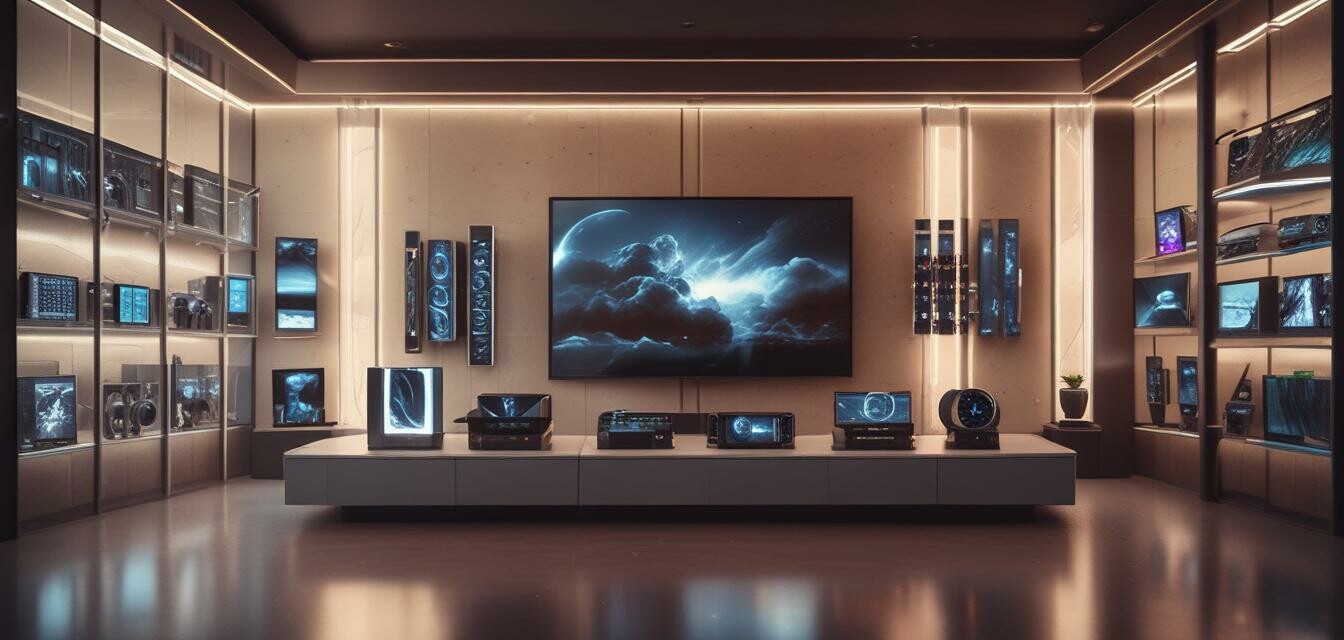
The Evolution of Consumer Electronics in 2025
Key Takeaways
- Luxury consumer electronics are integrating AI and smart technologies.
- Focus on sustainability is reshaping product designs and manufacturing.
- Personalization is becoming a key trend in premium devices.
- Advanced connectivity is defining user experiences in 2025.
- Consumers are prioritizing luxury and functionality in their electronic purchases.
The consumer electronics landscape is undergoing a significant transformation, particularly in the luxury sector. As we step into 2025, trends indicate a radical shift towards sustainable, high-tech, and user-centric designs. In this article, we will explore how luxury consumer electronics are evolving to meet modern needs and lifestyles, providing insights into the innovations shaping the market.
1. The rise of artificial intelligence
Artificial intelligence (AI) is no longer just a buzzword; it has become an integral part of luxury consumer electronics. From smart assistants embedded in devices to predictive analytics that enhance user experiences, AI continues to redefine how we interact with technology.
- Smart home devices: Luxury brands are incorporating AI into their home automation systems, enabling personalized control based on user preferences.
- Wearable technology: Advanced AI is enhancing health tracking features, offering tailored suggestions to users.
- Voice-activated gadgets: Devices with improved AI-powered interfaces are delivering seamless user interactions and convenience.
2. Sustainability and eco-friendly designs
As consumers become increasingly conscious of environmental issues, luxury electronics are responding with more sustainable practices.
- Manufacturers are opting for recyclable materials and energy-efficient designs.
- Many brands are committing to reduce carbon footprints, aligning with broader sustainability goals.
- Luxury consumers are actively seeking products that not only excel in performance but also contribute to environmental well-being.
Comparison of sustainable materials in electronics
| Material | Environmental Impact | Use Cases |
|---|---|---|
| Recycled plastics | Lower carbon emissions | Housing for gadgets |
| Bamboo | Fast-growing and biodegradable | Enclosures and accents |
| Aluminum | Highly recyclable | Premium device casings |
3. Personalization in high-end electronics
Luxury consumers are leaning towards products that reflect their unique preferences and lifestyles.
- Customizable features: Many electronics now offer adjustable settings for optimized user experiences.
- Design options: Premium brands are providing choices in aesthetics, allowing consumers to select colors and finishings that resonate with their style.
- Enhanced user interfaces: Devices are adapting to individual user interactions, learning habits to enhance functionality.
4. Advanced connectivity and integration
Connectivity remains a crucial element in luxury consumer electronics.
With the adoption of technologies such as 5G and advanced Wi-Fi systems, devices are increasingly interconnected, providing a seamless experience across platforms.
Benefits of advanced connectivity
- Faster data transfer speeds leading to smoother functionality.
- Automatic updates and cloud integration for enhanced user experience.
- Inter-operability between various devices making a cohesive smart home environment.
5. Shopping trends for luxury electronics
The way luxury consumers shop for electronics is changing as well. The digital shopping experience is evolving to create a more immersive and personalized service.
Current trends in luxury electronics shopping
- Virtual showrooms: More brands are introducing virtual reality options that allow consumers to try products before buying.
- Social media influence: Luxury brands are engaging consumers through social platforms, driving trends and promotions.
- In-store technology: Upgraded retail experiences featuring interactive displays and tech-assisted consultations.
Conclusion
The evolution of luxury consumer electronics in 2025 reflects a dynamic response to modern needs. With an emphasis on artificial intelligence, sustainability, personalization, and connectivity, top-tier brands are focusing on delivering products that enhance users' lifestyles while prioritizing environmental responsibility. The future looks promising, as the luxury tech market continues to innovate and adapt to the growing expectations of consumers.
Pros
- Integration of advanced technologies enhances user experience.
- Sustainable practices are beneficial for the environment.
- Greater personalization adds a unique touch to luxury products.
Cons
- Higher prices may limit accessibility for some consumers.
- Dependence on technology can lead to issues if things fail.
- Fast-paced innovation may make products obsolete quickly.
Stay updated with the latest trends in luxury consumer electronics by exploring our section on news and trends in luxury products. For insights on what to look for while shopping for high-end gadgets, check out our luxury buying guides. Want to learn about the most expensive items available? Visit our page on electronics for more.
Curious about collectible gadgets? Explore our section on collectibles to find unique pieces to enhance your collection.
Lastly, consider how technology integrates into your daily routine by visiting our page on home and kitchen innovations that redefine modern living.

